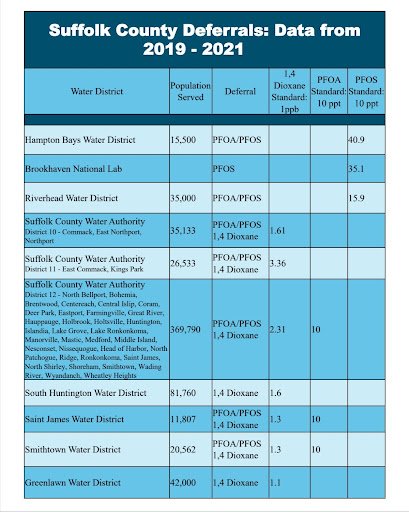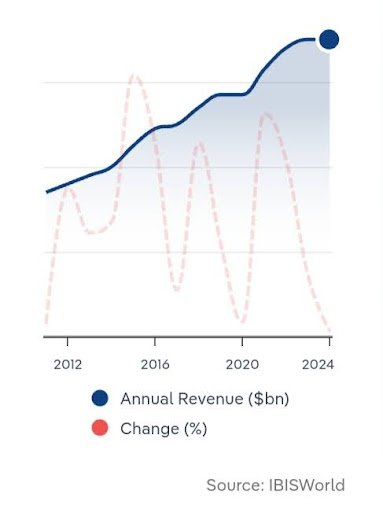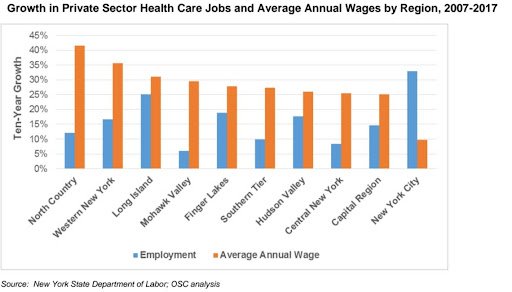
By Mar1s P0z0
October 18, 2024 1:11 pm
Video | Powerpoint | Website with multimedia (borrador)
Suffolk, New York—Every glass of water consumed by the county’s 1.5 million residents could contain contaminants. The Upper Glacial Aquifer, Suffolk’s primary drinking water source, is severely impacted by dangerous levels of nitrogen and 1,4-dioxane, both classified as potential carcinogens by the Environmental Protection Agency (EPA).
The New York Public Interest Research Group(NYPIRG) says that Suffolk has the most contaminated water in the state.(pdf)
The aquifer, once hailed as the jewel of Long Island for its crystal-clear, pure waters, is now on life support. Preserving the status quo has not only decimated the island’s once-thriving fishing industry but has also turned the aquifer into a silent threat to residents’ health.
The issue is not new, the county predicted this would happened and it tried to stopped it, but failed. A fifty-year sewer project, launched in the 1970s but derailed by corruption and mismanagement, left the country without this service for decades. Known as Plan 2015, it was supposed to be completed a decade ago.
Today, Suffolk is considered one of the most polluted counties in New York State, relying on a growing septic tank industry that generated $6.7 billion in revenue last year (IBS)https://www.ibisworld.com/united-states/market-research-reports/septic-drain-sewer-cleaning-services-industry/#IndustryStatisticsAndTrends
“Today, 75% of Suffolk County lacks sewage systems”.
Suffolk County, which lacks sewage systems in 75% of its territory, has become dependent on the septic tank industry. Health officials estimate that 70% of the nitrogen found in local waterways can be attributed to 360,000 cesspools and septic systems across Suffolk County.
The James Hutton Institute emphasizes that good soil quality is essential for septic tanks to function properly, as natural processes in the soil help reduce pollutants. However, Long Island soil is sandy and doesn’t filter .
According to Dr. Sarah Meyland, director of the New York Institute of Technology’s Center for Water Resources Management, these tanks are meant to filter household waste into the ground, but Long Island’s sandy terrain is too loose and porous, allowing waste to seep directly into the aquifer, the region’s only source of drinking water.
When asked the same question, Dr. Rios research professor of pharmacobiology at the Department of Chemistry of the University of Guadalajara, about the use of septic tanks she says “that was a medieval practice” of a time when modern sewer systems didn’t exist.
Long Island generates millions of pounds of nitrogen each year. In Suffolk County, “unfortunately, most of that, as we all know, is not going to sewage treatment plants, but is going to septic tanks,” and eventually seeping into groundwater and surface water, Dr. Gobler, director of the gobbler lab at the University of Stony Brook, said. “We do expect these numbers to rise.”
Meanwhile, the septic tank industry is valued at approximately $7 billion as of 2024 IBISWorld, continues to thrive, despite more than 380,000 septic tanks contaminating the aquifer over the last 40 years. In the past decade, the county’s population has doubled, which has also increased waste production and, with it, nitrogen levels and the industrial chemical 1,4-dioxane (a forever chemical) in the water.
Dr. Richard Murdocco, a Stony Brook University public policy professor, says that a sewer plan without taking into account urban development is a mistake.
Findings from the data investigation
Data from the Environmental Protection Agency (EPA) ECHO shows that the highest nitrogen concentrations are primarily found in areas with apartment complexes. Interestingly, in the two locations we visited in East Setauket and St. James, both were next to a nursing home, highlighting the vulnerability of these centers to water contamination due to the use of septic tanks by congregated dwellings.

Source: https://echo.epa.gov (data visualization: Dropbox.com/mywork)
The EPA data indicates that Coram has higher levels of nitrogen contamination in its drinking water compared to other areas in the county. The maximum nitrogen level recorded in Coram reached up to 54 mg/l, indicating that Coram’s nitrogen concentration is 2700% above the safe maximum threshold of 2 mg/L compared to the other six zip codes in the region. This situation raises serious environmental health concerns that disproportionately affect lower-income communities
Coram, located in Suffolk County, is often characterized as an economically disadvantaged area. According to the U.S. Census Bureau, the median household income in Coram is significantly lower than the county average, with a substantial portion of the population living below the poverty line, a serious problem that concerns Dr. Murdocco explains that the dwelling development and urbanization has been an ongoing challenge for the island.
Dr. Murdocco, critiques the tendency of local governments to increase density in Special Groundwater Protection Areas (SGPAs), regions deemed too environmentally sensitive for development. He argues that municipalities need stricter oversight, highlighting a recent decision by the Town of Brookhaven’s Planning Board to allow residential units without sewer connections in such an area. Murdocco emphasizes that any comprehensive plan needs to address development in SGPAs, stating,
“The aquifer won’t be slowly poisoned by large actions, but rather by thousands of small ones”
NITROGEN
Above 2 mg/L causes cancer & baby blue syndrome
Dr Gobles explains that nitrogen is formed when microorganisms decompose in wastewater and when drinker or inhale causes cancer. A 2018 study titled “Drinking Water Nitrate and Human Health,” published in the International Journal of Environmental Research and Public Health, shows that nitrogen particularly affects the health of vulnerable groups such as pregnant women, children under 6 years old, and the elderly. In children, a lack of oxygenation in the blood can lead to blue baby syndrome, a condition that can be fatal if not treated in time. Nitrate, when ingested, can cause miscarriages in pregnant women and fetal deformities, as well as heart damage in the embryo.
Additionally, people with weakened immune systems, such as the sick and the elderly, are exposed to greater health risks due to high nitrogen levels in the water. In adults, it can lead to thyroid and ocular problems, digestive system damage, liver and lung cancer, and even death.
(Ward, 2018,p. 10). PDF:

🟥 Graph: Estoy trabajando en una gráfica 📊 más visual. https://www.mdpi.com/1660-4601/15/7/1557/pdf?version=1532341230
1,4-DIOXANE
Above 0.35 causes cancer and Liver Diseases.According to a study published in Science Direct, the industrial chemical 1,4-dioxane has carcinogenic effects, impacting organs such as the liver and kidneys, as well as the reproductive system. It can lead to thyroid problems and respiratory, nasal, and ocular issues. Additionally, it causes fatigue and immune system damage. The U.S. Environmental Protection Agency (EPA) classifies 1,4-dioxane as a “possible human carcinogen.”
Given these health risks, scientists from Yale University are conducting blood and water tests to better understand the prevalence of 1,4-dioxane in drinking water. They warn that there are currently no filters on the market that can effectively remove 1,4-dioxane from water. Furthermore, they caution consumers about false promises from companies claiming to offer filters capable of eliminating this toxic substance.
Mini audio interview with Barbara Masi, Superfund Center, Yale University:
https://youtu.be/w0znqBWwLbU?si=K_
Similarly, nitrogen contamination poses another serious threat to water quality. Experts like Dr. Gobler from the Gobler Laboratory at Stony Brook University recommend a filtration system based on reverse osmosis and ultraviolet light, combined with hydrogen peroxide. However, many retail outlets, including Home Depot, offer incomplete systems that lack hydrogen peroxide, a crucial component for breaking down the nanometric structure of 1,4-dioxane, making them ineffective.
Gobler, points out that the main source of nitrate contamination in the county’s aquifer “are the septic tanks”. Dr. Gobbler has been sounding the alarm that there are cases of lung cancer in areas near the north and south shores. He explains that the nitrogen is causing algae blooms that generate gasses that are carcinogenic to humans. There are scientific studies that correlate the relationship between high levels of nitrogen and cancer. The nitrogen levels in Long Island can exceed 200% above permitted levels in some areas.
NITROGEN PERMITTED LIMITS
Although the permitted federal standard of nitrogen in water is set at 10 milligrams per liter, Suffolk County sets the standard at approximately 4 mg/l. However, Gobler warns that “there is epidemiological evidence showing a correlation between nitrogen levels above 2 mg/l and an increase in certain types of cancers.”
Grey Simple Modern 3 Layers Funnel Diagram Chart Graph by DigitalSCRM
Robert Sweeney (D-Lindenhurst), former chairman of the New York State Assembly Committee on Environmental Conservation, in 2013 sponsored several pieces of legislation intended to clean up Long Island’s waters, including one to establish state groundwater standards limiting nitrogen levels to 2 parts per million (2 mg/L).
Increasing Cancer Rates
More than 1 in every 4 people in Suffolk will have cancer by 2050
Since 1976, Long Island has experienced an alarming rise in cancer rates, a trend that continues to grow.
According to the U.S. Census Bureau, Suffolk County’s population increased from 1.26 million in 1976 to 1.4 million in 2000. Since then, growth has been minimal, fluctuating between 1.4 and 1.5 million, with the population remaining stagnant since 2000. This stagnation can be attributed to several factors:
- mortality rate exceeds the birth rate;
- Emigration of residents out of the area;
- Limited housing capacity to support a larger population.
These factors, however, do not account for the steady rise in cancer in the region. Despite a relatively stable population, cancer rates have risen consistently, suggesting a genuine increase in diagnoses rather than demographic effects.
Between 2000 and 2019, cancer cases grew by an average of 0.12% annually, amounting to a 1% increase every nine years. By 2019, this meant that 10% of the population—roughly one in ten adults in Suffolk—was living with some form of cancer.
If this trend continues, projections indicate that by 2050, over one in four adults in the county, or 27.8% of the population, will face this disease. These figures highlight the urgent need for research and action to address the factors driving this trend.

Data: https://www.dropbox.com/scl/fi/pqjabnitfnbk6x91bsabn/CancerRate_-20241116.xlsx?rlkey=uiobgrdib61z4l2j34rh4w533&dl=0
Data Source: NY State Department of Health, Bureau of Cancer Epidemiology

Home Filtration Systems
The cost of a complete filtration system for a home, which includes hydrogen peroxide, is around $6,500, a price many residents cannot afford. This is the case of Paul Cimmino, Amityville high school teacher, who, shortly after he and his wife purchased a new home in Commack, learned that their area has high concentrations of water contaminants. Nowadays, Paul collects water from the filters that his school recently installed to take home.
In a survey, residents were asked if they were aware of these two toxins, and 90% answered no. While 95% drink tap water, and 80% drink bottled water
(infographic).
Aside from being a country sued by the New York State Attorney General’s Office, for not complying with the removal of outdated septic tanks in public parks and some buildings, Suffolk County recently became the county that requested the most referrals to extend the implementation of the New York State drinking water law. In 2024, the referrals were extended to 2025. This new law requires treatment plans to remove the contaminant 1,4-dioxane, from drinking water supplies. However, local treatment plants are baffled about how to apply this mandate. According to scientists at the Superfund Center at Yale University, there are currently no effective systems available for filtering 1,4-dioxane. As previously mentioned, Yale’s scientists spent an entire day’s conference explaining there is no filtration system that can effectively filter 1,4-dioxane from drinking water at the moment.
“31 Water suppliers in the state applied for the NYS deferral program. 24 of those who applied were on LI. Out of those 24, 21 received the deferreal.”

Reached out to the Suffolk County Water Authority (SCWA) for comment and was directed to the following statement on their website: “In recognition of the threat caused by the emerging contaminants 1,4-dioxa… We fully support the state’s action… But as the process of receiving state approval for, building and putting into service treatment systems for these compounds can take years, SCWA sought and received a deferral to the regulations that will give us additional time to meet the new standards.
Since SCWA is the major provider of water to residents of Suffolk county, a FOIL petition was sent to them requesting information on the number of water treatment plants they currently operate, they said they needed to speak to their legal department.
iS BOTTLE WATER THE SOLUTION?
Bottled water is also not fully regulated in the U.S. According to the U.S. Geological Survey study bottling companies are responsible for their own quality standard reports, with some operating on an honor system without strict oversight from authorities. The USGS reports that on Long Island, there are 47 water bottling plants using the underground water, raising serious questions about the quality of the water consumed by residents. These plans also bottle beer, and other types of beverage.

BY LOCATION COORDINATES: Blue (water bottling plants) vs red (high levels of nitrate in drinking water). Source: USGS (https://labs.waterdata.usgs.gov/visualizations/bottled-water/index.html#/). Mi excel: https://www.dropbox.com/ExcelData
Meanwhile, profits from the septic tank industry continue to rise, as do those in the health sector, which keeps expanding clinics and hiring more staff, right after New York City.

Septic industry revenue

Suffolk County is suffering with a severe housing shortage. The county makes it illegal to build anything but single-family homes in the vast majority of its residential neighborhoods, keeping supply low and prices inflated.
While some county officials point to sewer infrastructure challenges as a barrier to new, denser developments, housing advocates argue this reasoning is a convenient excuse to keep the status quo. For powerful homeowner associations and real estate interests, preserving current zoning rules proves profitable—even if it comes at the cost of broader public health and access to affordable housing.”
Additionally,over 200 institutions, environmental groups, and universities are also indirectly benefiting from federal and state funds to study and analyze the contamination, while Suffolk residents fall victim to this environmental crisis. James Daly, Ph.D, former associate scientist at Brookhaven National Lab, highlights that, ironically, the aquifer contamination problem has generated its own economy.
In a recent Zoom conference with congressional candidates sponsored by Citizens campaign, a grassroot organization on Long Island, a question was raised about whether Proposition 2 includes a plan to phase out septic tanks, similar to the 50-year sewer initiative launched in the 1970s (Plan 2015). Adrienne Esposito, a representative of Citizens Campaign, a grassroots organization, explained that sewers are considered too expensive and that one township xxxx is opposed to the project. She did not clarify whether the opposition came from a majority of townships or just that single one.
The most common explanation local elected officials cite for not upgrading to a desear system is cost. Even though the county’s median household income is almost $50,000 more than the national average and residents pay one of the highest taxes in the county, policymakers say they simply can’t afford it. Last summer, the Republican members of the county’s legislature squashed an effort to slightly increase the county’s sales tax to pay for sewer upgrades.
Not all legislators are against it
Back in 2013, Suffolk Legislator Kara Hahn (D-Setauket) said that expanding the sewer system would considerably help combat the increasing nitrogen. But at a cost of $2.1 billion to hook up a mere 40,000 homes, Suffolk County has approximately 587,836 homes. That would be a grand total of $33.8 billion, “hence a long-term, multi-year plan like the one set in the late ’70s (Plan 2015) is most needed as soon as possible, and postponing it with quick fixes simply prolongs the problem. Suffolk county residents deserve a permanent fix.” says Dr. James Daly, former climate and atmospheric researcher at Brookhaven National Lab, Departament of Emergy.
Proposition 2
 A proposed new law that will be on the ballots on November 5th, but it does not explicitly outlines a plan to phase out septic systems entirely over the coming years and decades, as was envisioned in plans like Plan 2015. Instead, the focus is primarily on replacing outdated and polluting septic systems with knew ones, nitrogen-reducing technology and expanding sewer infrastructure.
A proposed new law that will be on the ballots on November 5th, but it does not explicitly outlines a plan to phase out septic systems entirely over the coming years and decades, as was envisioned in plans like Plan 2015. Instead, the focus is primarily on replacing outdated and polluting septic systems with knew ones, nitrogen-reducing technology and expanding sewer infrastructure.
While it provides grants to homeowners for these upgrades and aims to reduce nitrogen pollution (not 1,4-Siocide), there is no long-term strategy to completely eliminate septic systems, which continues to be the main cause of groundwater contamination even if the according to Dr. Gobler, and Dr. Ríos. She explains that even with Modern septic system, the soil cannot filter forever chemicals like 1,4-Dioxide and Nitrates.
Proposition 2 also, does not propose requiring new homes to include dry sewer pipelines in preparation for future sewer connections. However, Adrienne Esposito said she would welcome such a law if legislators passed it.
The same question was posed to Congressman Nicholas LaLota, who represents Suffolk County in the U.S. House of Representatives. His assistant responded that they would forward the question to the congressman and get back with a reply.
A comprehensive plan is need it
The population of the county continues to grow exponentially. If the problem is not addressed urgently, geologist Valken warns that Suffolk could run out of water in the coming decades. In contrast, in Honolulu, Hawaii, the majority of septic tanks were replaced, resulting in a significant reduction in aquifer contamination. This underscores their importance of taking action now to avoid a similar future in Suffolk.
Organizations like The Long Island Commission for Aquifer Protection (LICAP), a bi-county organization formed in 2013 by unanimous votes in the Nassau and Suffolk Legislatures states on its website that their role is “to address both quality and quantity issues facing Long Island’s aquifer system and to advocate for a coordinated, regional approach to groundwater resources management.” Unfortunately, on their website the only advice to the public to “save the water” and “save the aquifer” is to “take action” by reducing water consumption.
Reduccion in water testing is the result of massive layoffs in the Department of Health services’ environmental division in charge of testing, in the last two decades.
In Suffolk County, the widespread use of septic tanks, rather than a sewer system, plays a significant role in water contamination. Septic tanks do not effectively filter out chemicals like 1,4-dioxane or other contaminants, which can then seep into the groundwater. Given that Suffolk relies heavily on groundwater for drinking water, these contaminants pose a direct risk. Installing a comprehensive sewer system could significantly mitigate this contamination by directing wastewater to treatment facilities where harmful chemicals could be removed before discharge.
![]()
Videos: M{\P / Fotografías de portada: Dejan / Infografías: MP (Canva)